As the golden sun rises over a meandering river, a flock of birds can be seen tracing its winding path with remarkable precision. While many bird species rely on powerful air currents and thermals to guide their journeys across vast distances, others have evolved to follow waterways with dedicated determination. This phenomenon represents a fascinating adaptation in avian navigation that combines instinct, evolution, and environmental awareness. Understanding why some birds choose rivers over air currents reveals not just the diversity of migration strategies but also the incredible adaptability of these feathered travelers as they navigate our complex world.
The Navigation Dilemma: Rivers vs. Air Currents
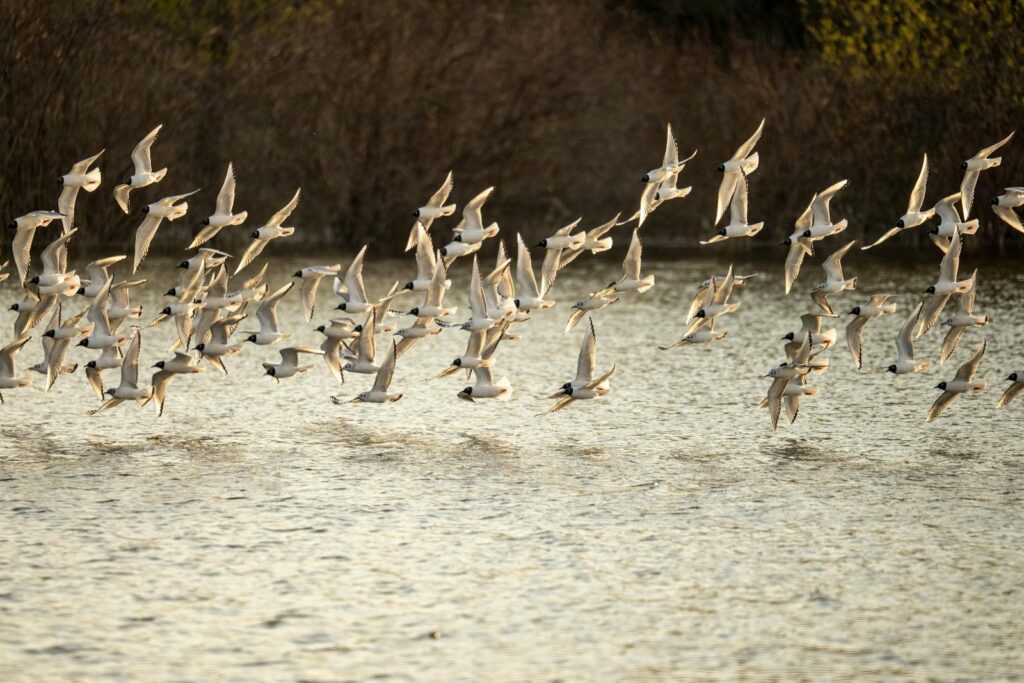
Birds face a critical choice when planning their migratory routes: follow predictable geographic features like rivers or rely on invisible but powerful air currents. Air currents offer energy efficiency through thermal uplift and tailwinds that can significantly reduce the metabolic costs of long-distance flight. However, rivers provide reliable visual landmarks that remain constant regardless of weather conditions, serving as unwavering navigational guides even when skies are overcast or winds are unpredictable. This fundamental difference creates distinct advantages and challenges for different species, with their ultimate choice often reflecting millions of years of evolutionary adaptation to specific ecological niches. The navigation systems birds employ represent some of nature’s most sophisticated biological technologies, fine-tuned through countless generations of trial and error.
Ecological Advantages of Riverine Routes

Following rivers offers birds several critical ecological advantages beyond mere navigation. Rivers create microhabitats with abundant food sources, providing essential refueling opportunities during energetically demanding migrations. The vegetation along riverbanks harbors insects, seeds, and berries that sustain birds during their journeys, while the water itself supplies crucial hydration that birds following high-altitude air currents might struggle to access. Additionally, riparian zones typically offer ample shelter and protection from predators, creating natural rest stops where exhausted travelers can safely recover. Research has shown that some species time their migrations to coincide with seasonal insect hatches along specific waterways, demonstrating the sophisticated relationship between these birds and their river highways.
The Visual Navigation Hypothesis
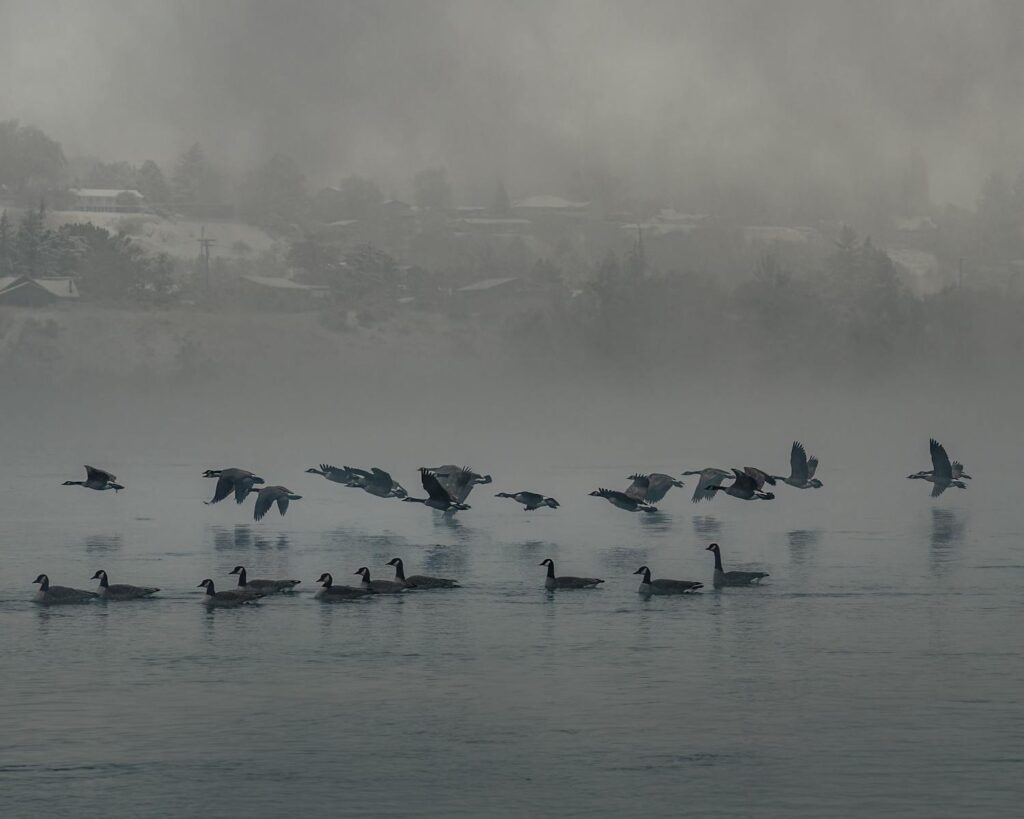
Scientists studying avian migration have developed the Visual Navigation Hypothesis to explain the prevalence of waterway-following behaviors. This theory suggests that rivers serve as unmistakable visual reference points in the landscape, allowing birds to confirm their position and direction even without access to celestial cues or magnetic sensing. Rivers are particularly valuable as navigation tools because they create high-contrast boundaries against the surrounding terrain that remain visible even in low light conditions. For species that migrate during dawn, dusk, or night hours, these visual landmarks provide crucial orientation information when other navigation systems might be compromised. Recent tracking studies using miniaturized GPS devices have confirmed that some birds follow rivers with remarkable precision, rarely deviating from the waterway even when shorter routes exist.
Species That Prefer Riverine Migration Routes
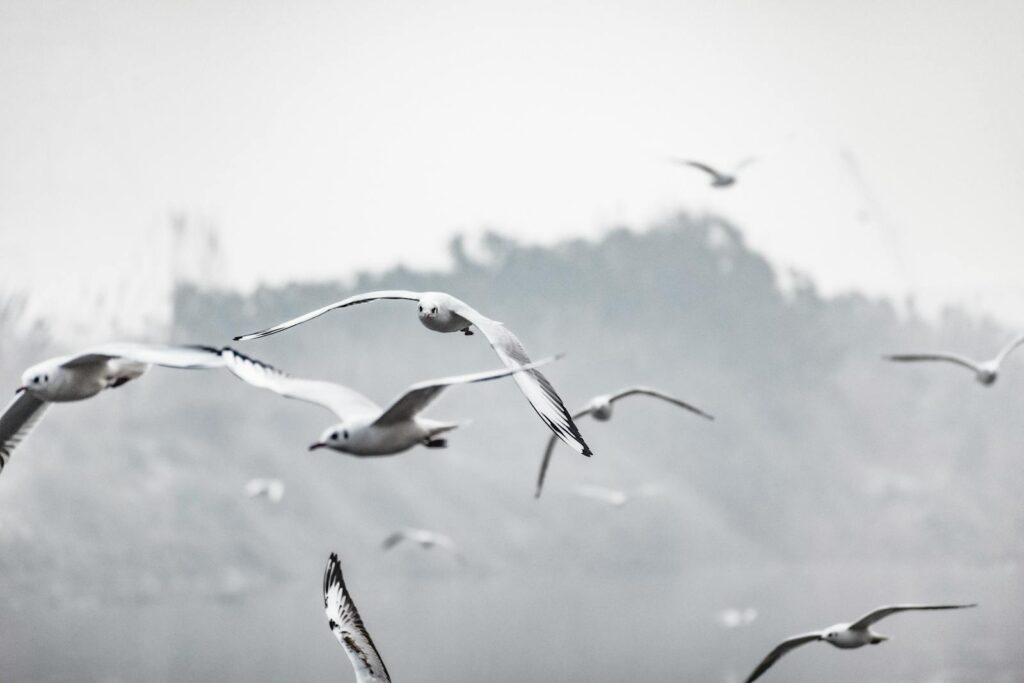
Numerous bird species demonstrate a clear preference for following rivers during migration, with waterfowl being perhaps the most obvious examples. Ducks, geese, and swans utilize rivers both as physical guides and as reliable habitats where they can rest and feed. Wading birds like herons and egrets similarly stick to waterways, moving between feeding grounds while rarely straying far from water. More surprisingly, certain songbird species that aren’t necessarily water-dependent, such as warblers and flycatchers, also demonstrate river-following behaviors during migration. Kingfishers represent one of the most specialized river-following species, often traveling hundreds of miles along a single waterway rather than cutting across land, even when doing so would significantly shorten their journey.
The Role of Memory and Learning
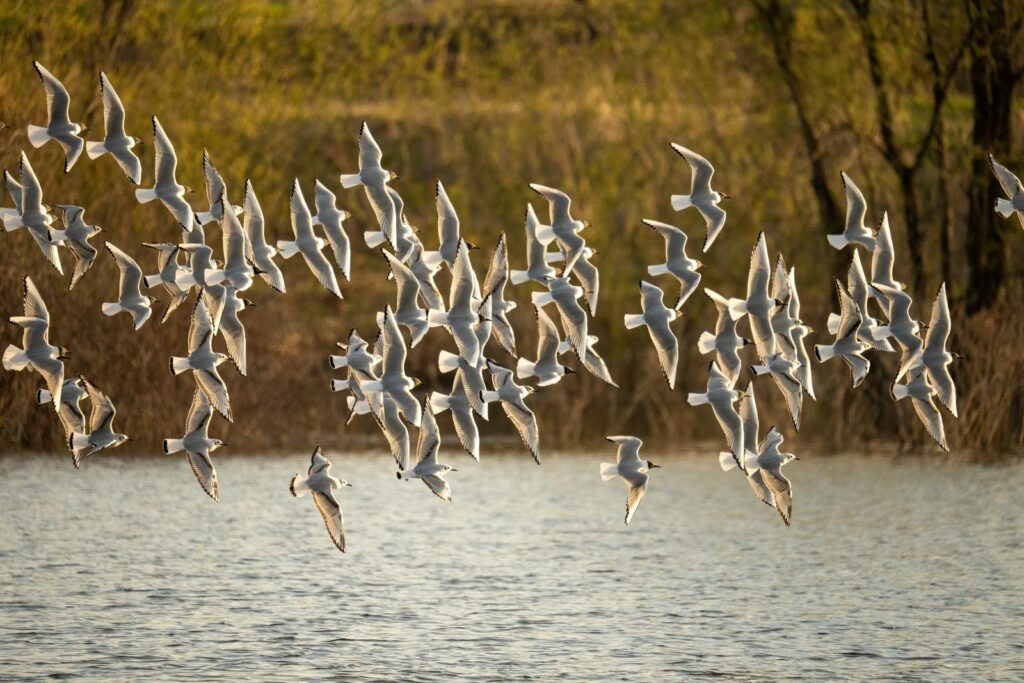
For many bird species, river-following behavior represents a complex interplay between innate instinct and learned experience. Young birds on their first migration often follow adult guides who possess knowledge of traditional routes, gradually building mental maps of river systems that will serve them for life. Researchers have discovered that older birds demonstrate more precise navigation along rivers, suggesting that experience enhances their ability to follow these waterways efficiently. Some species even appear to memorize specific landmarks along rivers, such as distinctive bends, confluences, or human structures, which they use as waypoints during subsequent migrations. This combination of instinct and learning creates a sophisticated navigation system that improves throughout a bird’s lifetime.
Weather Resilience Through River Navigation
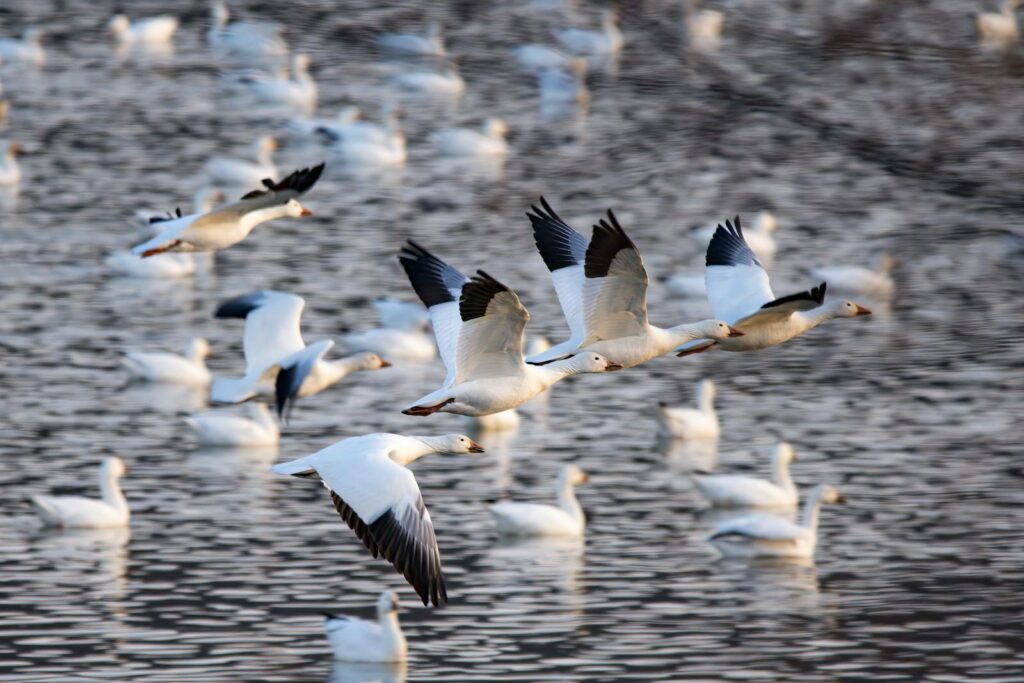
One of the most significant advantages river-following birds enjoy is resilience against adverse weather conditions that can disrupt air current navigation. While birds riding thermals and jet streams must constantly adjust to changing wind patterns and may be blown off course by storms, river-followers maintain consistent orientation regardless of atmospheric disturbances. During periods of heavy cloud cover or fog that obscure celestial navigation cues, rivers remain visible and reliable guides. This weather independence can be particularly crucial during spring migrations, when unstable weather patterns are common across many regions. Studies tracking migration success rates have found that river-following species typically experience fewer weather-related delays and detours than their air current-riding counterparts.
Energy Conservation Strategies

Birds that follow rivers have evolved specific energy conservation strategies that differ from those used by thermal-riding species. Rather than gaining altitude to catch favorable winds, river-followers often fly at lower elevations where they can take advantage of reduced wind resistance and ground effect aerodynamics. Many river specialists have developed flight patterns that involve gliding close to the water’s surface, using the boundary layer of still air to reduce energy expenditure. Some species, particularly waterfowl, will alternate between flying and swimming or floating downriver, integrating multiple modes of transportation to conserve energy. Researchers have calculated that certain river-following strategies can reduce energy consumption by up to 30% compared to overland routes, representing a significant advantage during the physically demanding migration season.
Predator Avoidance Behaviors

The choice to follow rivers may also reflect sophisticated predator avoidance strategies employed by certain bird species. Rivers create natural boundaries that some aerial predators are reluctant to cross, potentially providing a safer corridor for migrating birds. The varied habitats along riverbanks offer immediate escape options, from dense vegetation to the water itself, giving river-followers multiple ways to evade threats. For smaller songbirds particularly vulnerable to predation, rivers provide a continuous series of protective habitats where they can quickly seek cover when danger approaches. Ornithologists have observed that some species deliberately time their river crossings for dawn or dusk to minimize exposure to diurnal predators, demonstrating how navigation and predator avoidance behaviors are closely integrated.
Evolutionary Origins of River-Following Behavior

The tendency to follow rivers rather than air currents has deep evolutionary roots that likely date back millions of years. Fossil evidence suggests that many modern river-following species evolved from ancestors that were more closely tied to aquatic environments, predisposing them to remain near water during migrations. As early birds began undertaking longer journeys, those with genetic predispositions to follow waterways may have enjoyed higher survival rates, gradually reinforcing this behavior through natural selection. The evolution of specialized visual processing capabilities in certain bird species appears to be specifically adapted for detecting the distinctive linear patterns that rivers create in landscapes. Comparative studies of bird genomes have identified variations in genes associated with both navigation and water affinity that correlate strongly with river-following behaviors, suggesting multiple pathways through which this adaptation has evolved.
Human Impacts on River-Following Migrants

Birds that follow rivers face unique conservation challenges in our rapidly changing world. River modifications, including dams, channelization, and water diversion projects, can dramatically alter the navigational landmarks these species rely upon. Pollution and habitat degradation along riverbanks reduce the availability of crucial feeding and resting areas that sustain migrants during their journeys. Light pollution near rivers can disrupt the navigational abilities of birds that migrate at night, potentially leading them astray from their traditional waterway routes. Conservation efforts specifically targeting riparian corridors have become increasingly important for protecting these specialized migrants, with restoration projects aiming to maintain the ecological integrity of river systems that have served as avian highways for millennia.
Climate Change Effects on River-Following Migration
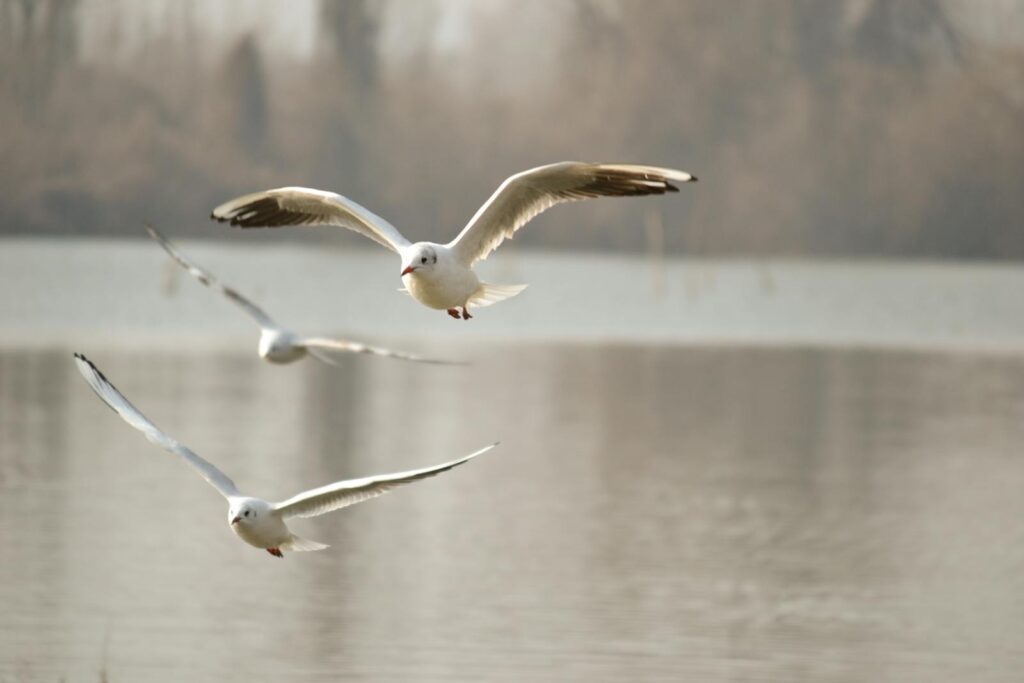
Climate change is creating new challenges for birds that navigate along rivers rather than air currents. Shifting precipitation patterns are altering river flow regimes, with some waterways experiencing seasonal drying that disrupts traditional migratory pathways. Rising temperatures affect the timing of food availability along rivers, potentially creating mismatches between when birds arrive and when their preferred foods are abundant. Extreme weather events like floods can dramatically reshape river channels, eliminating familiar landmarks and forcing birds to adapt their routes. Research tracking river-following migrants over decades has documented gradual shifts in timing and routes that appear to correlate with climate-driven changes to river ecosystems, highlighting the vulnerability of these specialized navigation systems to environmental change.
Technological Insights into River Navigation
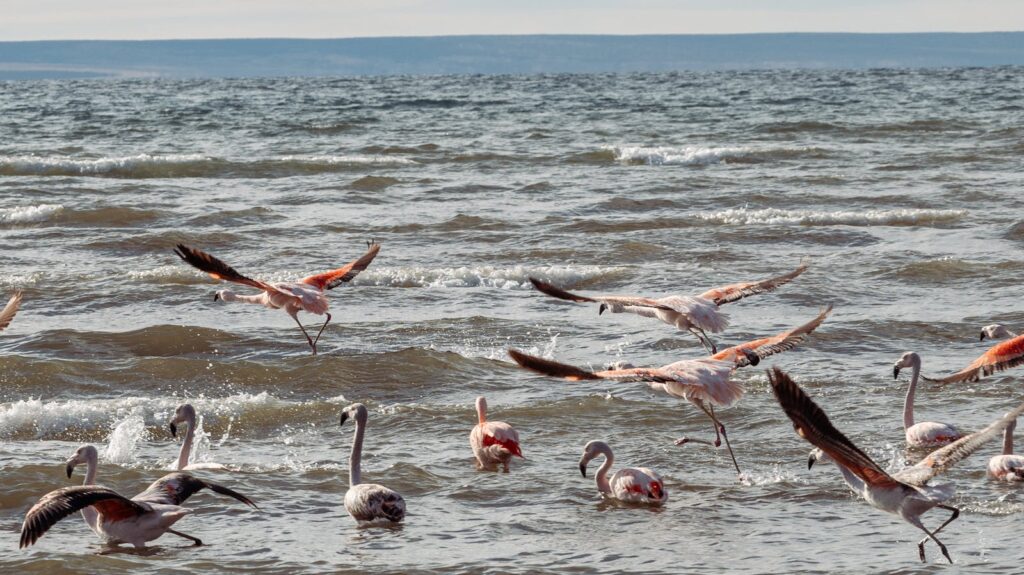
Advanced tracking technologies have revolutionized our understanding of how birds navigate along rivers. Miniaturized GPS devices weighing less than a gram now allow researchers to track even small songbirds with extraordinary precision, revealing previously unknown details about their river-following behaviors. Radar ornithology has documented mass movements of birds along major waterways, showing how river corridors can concentrate migration traffic to levels hundreds of times higher than surrounding landscapes. Laboratory experiments using sophisticated flight simulators have demonstrated that many birds possess innate abilities to recognize and follow simulated river patterns, even when experiencing them for the first time. These technological advances have transformed river-following behavior from a casual observation into a rigorously documented scientific phenomenon, helping explain one of nature’s most fascinating navigation strategies.
Conservation Implications and Future Research

Understanding why some birds follow rivers instead of air currents carries significant implications for conservation planning and habitat protection. Recognition of major river systems as critical migratory corridors has led to international conservation agreements specifically designed to protect these aquatic highways and their surrounding habitats. Researchers are now investigating how artificial intelligence and satellite imagery might help identify previously unknown river migration routes, particularly in remote regions where traditional field studies are challenging. Questions remain about how flexible river-following behaviors might be in response to environmental change, and whether species can adapt quickly enough to survive disruptions to their traditional waterway routes. The future of many migratory birds may depend on our ability to preserve the integrity of river systems that have guided their journeys for countless generations.
In the grand symphony of bird migration, rivers represent nature’s original highways—reliable, resource-rich corridors that have guided winged travelers for millions of years. While the invisible highways of air currents offer their own advantages, the ancient practice of following water speaks to a profound connection between birds and the landscape features that have shaped their evolutionary history. As we continue to unravel the mysteries of avian navigation, the birds that follow rivers remind us that sometimes, the most reliable path forward isn’t found in the sky’s invisible currents, but in the tangible, life-giving waters that have carved their way across our planet’s surface since time immemorial.
